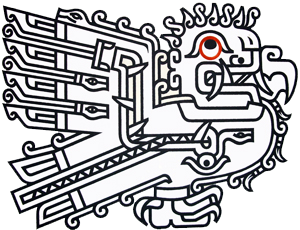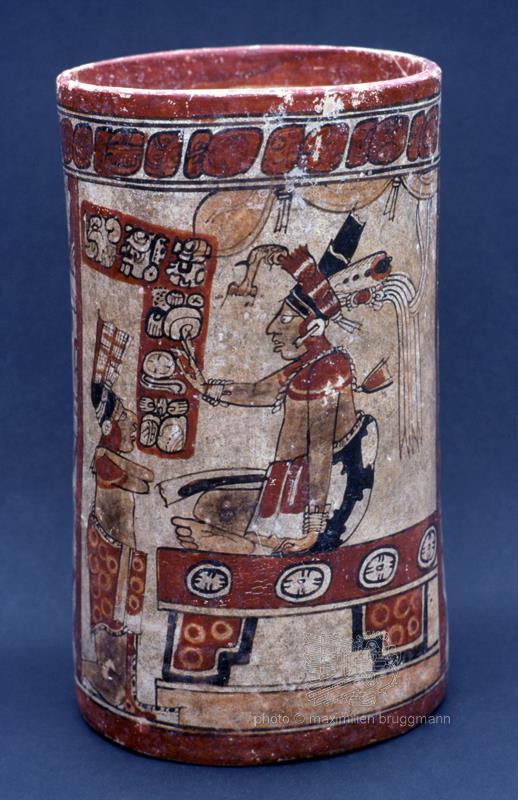Description
Funerary vase from temple no. 1 in the ruins of Tikal, Guatemala. It is a polychrome ceramic vessel with a height of 29.8 cm and a diameter of 17.3 cm. This beautiful example dates back to 700 AD. (Museo Nacional de Tikal). The vase represents two figures. One of them is seated; he seems to occupy a particularly important place in the social hierarchy of his group judging by the way he is dressed and the monumental headdress he wears. A number of hieroglyphs and essentially symbolic decorations can also be seen on this pottery, which are closely related to the scene depicted. These signs make it possible to date the funerary vessel with a fair degree of accuracy. Indeed, archaeologists have come to the conclusion that the vessel is about 1300 years old. The colours used are extremely delicate and show both the taste and the incomparable mastery of pre-Columbian artists. The manufacturing techniques were nevertheless very basic, as the Indians did not know how to use a lathe. The method known as the "colombin", known to other populations of the continent, was very widespread among the ancient Maya. It is still used today in many parts of the American continent. It consists of using small clay rods which, when welded together, make it possible to create the desired container. - 1977
Description
Funerary vase from temple no. 1 in the ruins of Tikal, Guatemala. It is a polychrome ceramic vessel with a height of 29.8 cm and a diameter of 17.3 cm. This beautiful example dates back to 700 AD. (Museo Nacional de Tikal). The vase represents two figures. One of them is seated; he seems to occupy a particularly important place in the social hierarchy of his group judging by the way he is dressed and the monumental headdress he wears. A number of hieroglyphs and essentially symbolic decorations can also be seen on this pottery, which are closely related to the scene depicted. These signs make it possible to date the funerary vessel with a fair degree of accuracy. Indeed, archaeologists have come to the conclusion that the vessel is about 1300 years old. The colours used are extremely delicate and show both the taste and the incomparable mastery of pre-Columbian artists. The manufacturing techniques were nevertheless very basic, as the Indians did not know how to use a lathe. The method known as the "colombin", known to other populations of the continent, was very widespread among the ancient Maya. It is still used today in many parts of the American continent. It consists of using small clay rods which, when welded together, make it possible to create the desired container. - 1977





